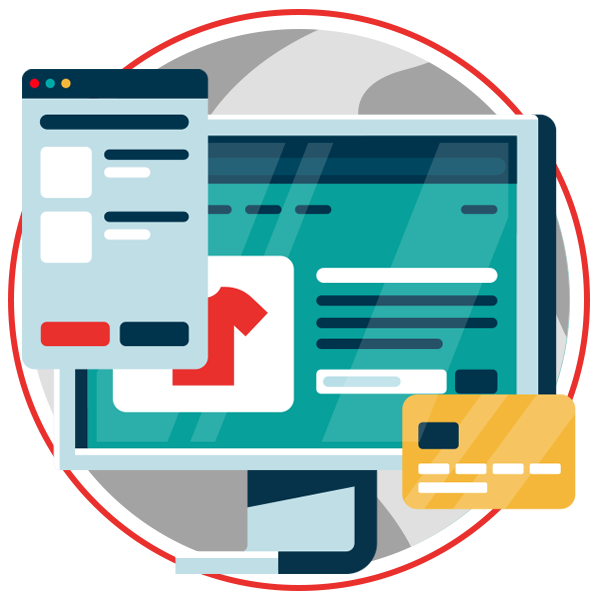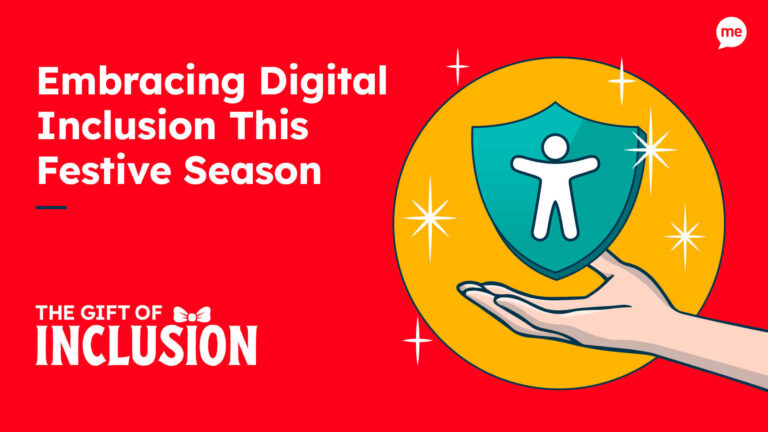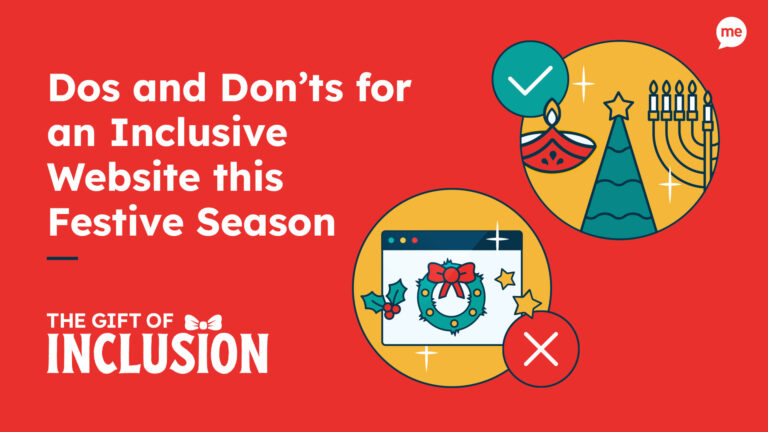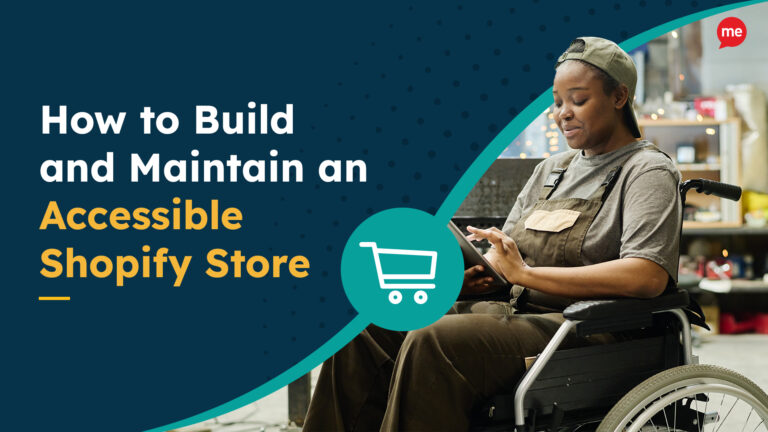Online retailers heavily rely on technology, employing sophisticated software like inventory management, order management, and shipping management systems to optimize their operations and maximize revenue.
However, amidst the focus on backend processes, the crucial aspect of accessibility on the sales website itself is often overlooked. This is a significant oversight, as neglecting this vital element can result in missed opportunities and considerable revenue losses.
Hoping for a big old bottom-line boost this Black Friday, but not sure whether your website is ready? Don’t panic. You still have time to make the essential updates if you take speedy action. Here’s everything you need to know.
The Rise of Online Shopping
In recent years, mobile devices have become an extension of our daily lives and have significantly influenced the way we shop. Sure, the restrictions during the COVID-19 years made online sales a necessity. But that was by no means the root cause. Rather, the pandemic merely acted as a catalyst for an already prevalent shift towards shopping online.
So, what other factors have driven the rise in online shopping? Here are some of the front runners:
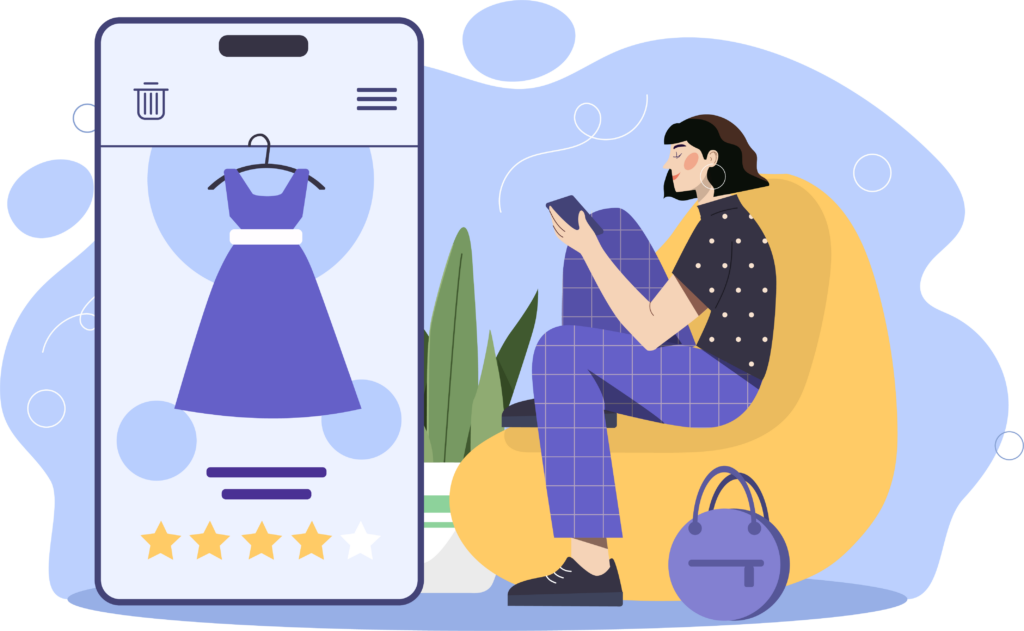
- 24/7 shopping – Online shopping fits better into people’s busy lives because they’re not restricted by 9-to-5 hours.
- Shopping on the go – Visiting physical stores takes time, whereas online shopping can easily fit into a coffee break or commute.
- Easy price comparisons – Getting the best deal is easier online as consumers can flick between competitor websites quickly.
- Special deals – Many retailers offer ‘online only’ sales to attract new customers and clear stock.
- More choice – Warehouses can store a much more extensive range of stock than high-street retailers can showcase in their storefronts.
- Free shipping – Many online retailers offer free shipping above a certain amount, saving consumers transport and parking fees, etc.
- Global products – Online shoppers can access products from all over the world and have them delivered to their door.
What’s the Big Deal About Black Friday and Cyber Monday?
The weekend sales serve as a strategic and cost-effective opportunity for Americans to get ahead on their Christmas shopping. Unsurprisingly, a substantial number of shoppers leverage these mega-sale events to plan and secure gifts for the upcoming holiday season. So, retailers who aren’t adequately prepared stand to lose out big time.
Unwrapping the Numbers on the Black Friday and Cyber Monday Shopping Frenzy
Despite the opportunities for shoppers to return to physical stores after the COVID-19-induced restrictions, online shopping still dominates. Black Friday spending last year reached $9.12 billion, 2.3% more than in 2021 (Adobe).
Let’s dig into a few more stats that demonstrate how important it is for businesses to have a robust online presence over the Black Friday/Cyber Monday weekend:
- Over 80% of people take part in shopping during Black Friday and Cyber Monday sales events (Tidio).
- 25% of Americans shop online because they think they’ll find better Black Friday deals (DriveResearch).
- The average American plans to spend $500 between Black Friday and Cyber Monday (Exploding Topics).
- The average Shopify order over the Black Friday/Cyber Monday weekend is $102.10 (Shopify).

Barriers to Accessible Online Shopping Experiences
Online access barriers occur whenever an element of a website’s design or presentation makes it difficult to read online content and make transactions with confidence. Some classic examples that we commonly spot on retail websites include:
- Unresponsive website designs that pose challenges for users with varying devices and screen sizes.
- Poorly designed navigation systems that complicate the browsing experience for individuals with motor disabilities.
- Lack of keyboard navigation, making it impossible to move through sales, item links, and purchase forms using only the TAB key.
- Inadequate alt text for images, hindering understanding for those using screen readers.
- Insufficient color contrast on swatches, making it challenging for visually impaired customers to differentiate between options on color picker charts based on visuals alone.
- The presence of sales deadline countdown timers, which can put unwanted pressure on those scanning for the perfect item rather than letting them shop at their own pace.
- Failure to provide text prompts on order errors (most websites simply show a red box outline), meaning many shoppers don’t know what to fix to amend their order and complete a purchase.
3 Vital Steps to Make Your Website Ready for The Sales Weekend and Beyond
Ultimately, technology that benefits people with disabilities helps all consumers, and upping your game on inclusion is not as scary, complicated, or costly as you may think. Here are the first few steps to get you started.
1. Familiarize Yourself with Essential Compliance Criteria
It’s impossible to improve if you don’t know what you’re doing wrong. But there’s so much accessibility information out there, knowing where to begin can be tricky. Your primary sources of guidance are:
- The Web Content Accessibility Guidelines (WCAG) – WCAG are internationally recognized, with WCAG 2.1 Level AA typically being the benchmark criteria for ‘making a website accessible’.
- National and regional legislation – It is illegal to treat people with disabilities less favorably, so ensuring your policies align with the Americans with Disabilities Act and any additional regional legislation is essential.
2. Update Your Website Design
Any modern-day developer worth their salt should be able to guide you on the principles of an accessible website design. In between developers or not sure where to start? You can find out more in our handy guide for webmasters. However, the ‘must have’ accessibility features to ensure inclusive online shopping journeys include:
- An accessibility-optimized content management system.
- Properly structured content.
- Alternative text on images.
- Descriptive names on links.
- Captions and transcripts for audio and video content.
- Sufficient color contrast
- Clear and consistent navigation – including keyboard-only navigation.
- Accessible forms and downloads.
- Responsiveness across a range of devices (mobile, tablet, PC).
3. Test Your Site with the Leading Accessibility Tools
At Recite Me, we understand that your e-commerce website is constantly changing as products are updated, edited, and removed. That’s why we’ve developed a suite of dedicated accessibility tools to help you navigate the process and make life easier for both you and your customers.
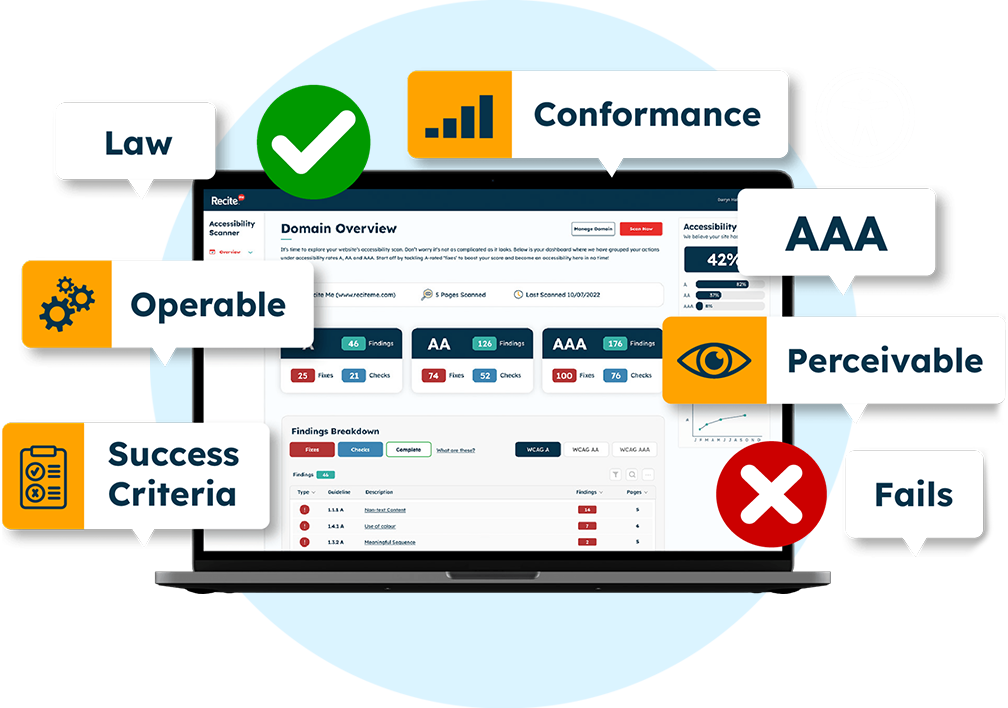
The Recite Me Website Accessibility Checker
The Recite Me Accessibility Checker audits back-end and front-end web development processes by running 396 separate compliance scans in line with WCAG 2.1 and breaking down the issues you should be working to fix.The methodology follows a simple four-step process to help you increase your accessibility score:
- Step 1: Scan Your Domains
- Step 2: Identify Accessibility Issues
- Step 3: Fix Accessibility Errors
- Step 4: Track Your Progress
The Recite Me Toolbar
The Recite Me Toolbar promotes inclusivity by allowing end users with sight loss, cognitive impairments, learning difficulties, physical disabilities, and varying linguistic needs to access your website per their individual needs and preferences. Shoppers can:
- Personalize font size, type, and color options.
- Choose the exact color contrast between the text and background.
- Utilize the mask screen tool, which isolates parts of the page to help with focus.
- Use the ruler tool to make reading easier.
- Download content as an audio file as an alternative to reading.
- Convert page content into over 100 different on-screen languages.
- Have the page read aloud in a choice of 65 different languages.
- Customize PDF documents and have them read aloud or translated.
- Zoom in on any part of a webpage.
- Use the built-in spell-checker and a fully integrated dictionary and thesaurus.
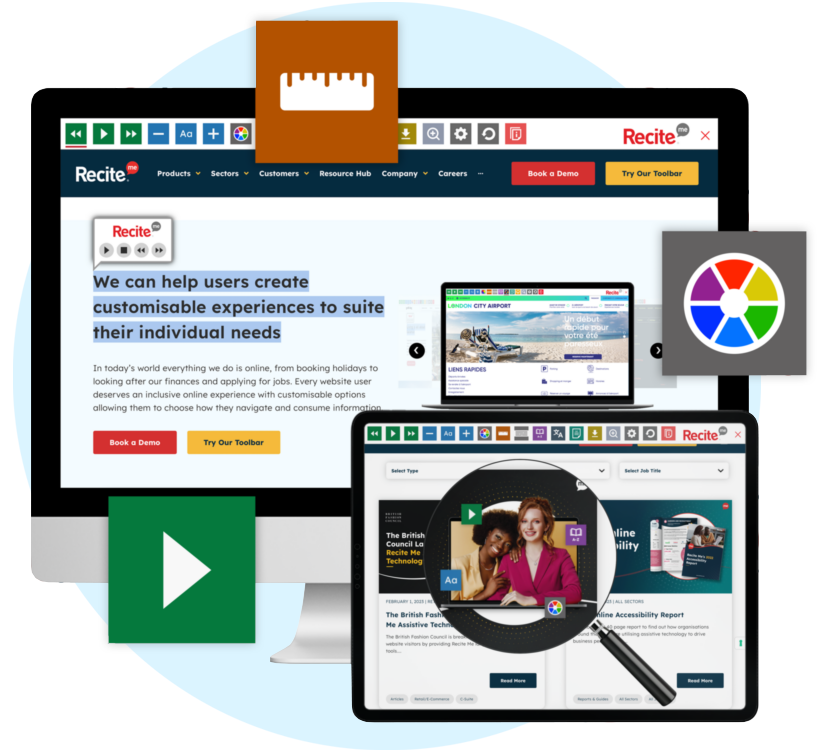
Get Started Today!
Join the thousands of websites already using Recite Me technology to provide more equitable online shopping experiences. Get started on your inclusion strategy today by working through the following action points:
- Contact our team for more advice about WCAG standards, accessibility legislation, and best practices for your e-commerce or online retail website.
- Run a free check of your website for WCAG 2.1 AA compliance.
- Try our toolbar or schedule a free demonstration to see the difference our technology can make for your shoppers.
